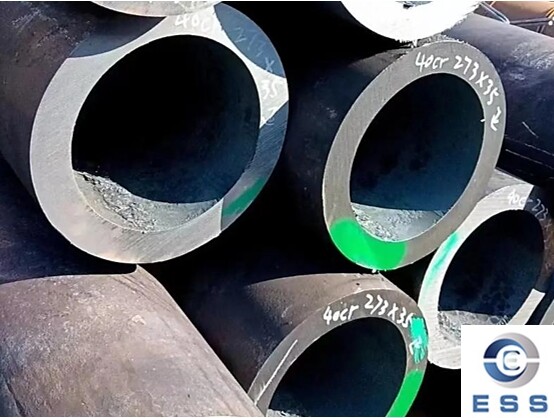
Precision
tube is a high-precision, high-brightness seamless
steel pipe produced by cold drawing or cold rolling processes. They have
excellent mechanical and physical properties such as high strength, high
toughness, high wear resistance, and high temperature resistance. Therefore,
they are widely used in petroleum, chemical, aerospace, aviation, nuclear
engineering, heavy-duty vehicles, mechanical equipment and other fields. The
production process of precision tubes is very strict, requiring precision
machining and heat treatment of multiple processes, among which annealing treatment
is a very important step.
Principle of precision tube annealing
Precision tube annealing refers to a heat
treatment process in which the precision tube is heated and kept warm for a
period of time within a certain temperature range and then cooled to room
temperature. Its main purpose is to eliminate the residual stress inside the
material, improve its texture structure, improve the plastic deformation
ability of the material, and reduce its hardness, so as to achieve better
mechanical and physical properties.
Necessity of precision tube annealing
During the manufacturing process of
precision tubes, due to the influence of rolling, stretching and other
processes, certain internal stresses and tissue defects will be generated,
which will affect the mechanical properties and stability of precision tubes.
For example, in the oil drilling industry, if the drill pipe, casing pipe and
other pipes used in deep well operations are not properly annealed, they may
fail due to fatigue due to stress concentration.
Annealing is a method of heating and heat
preservation to make the internal structure and stress of the precision tube
reach a relatively balanced state, thereby eliminating tissue defects and
reducing internal stress. After annealing, the mechanical properties of the
precision tube are more stable and can better meet the use requirements.
Common annealing methods
According to the material and use
requirements of the precision tube, the commonly used annealing methods include
complete annealing, spheroidizing annealing and stress relief annealing.
1. Complete annealing
Complete annealing is to heat the precision
tube above the critical temperature, keep it warm for a certain period of time,
and then slowly cool it to make the structure completely uniform.
2. Spheroidizing annealing
Spheroidizing annealing is to heat the
precision tube to a temperature slightly higher than Ac1, keep it warm for a
period of time, and then slowly cool it to make the carbide spheroidized and
evenly distributed.
3. Stress relief annealing
Stress relief annealing is to heat the
precision tube to a lower temperature, keep it warm and then slowly cool it,
which is mainly used to eliminate internal stress.
Effects after annealing
The organization and performance of the
precision tube after annealing have been significantly improved.
1. Eliminate residual stress
Annealing can eliminate the residual
internal stress inside the precision tube and reduce deformation and cracking
caused by stress concentration.
2. Improve the texture structure of the
material
During the annealing process, the grains in
the material will be rearranged and combined again, and the structure with a
relatively high defect density will be optimized, so that the overall texture
of the material is more uniform, the size of the grains is controlled, and the
performance indicators of the material are improved.
3. Improve mechanical properties
Annealing can also improve the mechanical
properties of precision tubes, such as strength, plasticity and toughness,
making them more adaptable to complex and changing working environments.
Summary
In short, annealing of precision tubes is
an important step to improve their performance and extend their life. By selecting
appropriate annealing methods and process parameters, the quality and
performance of precision tubes can be ensured to be optimal, providing a strong
guarantee for the normal operation and service life of the equipment.













 Eastern Steel Manufacturing Co.,Ltd not only improve product production and sales services, but also provide additional value-added services. As long as you need, we can complete your specific needs together.
Eastern Steel Manufacturing Co.,Ltd not only improve product production and sales services, but also provide additional value-added services. As long as you need, we can complete your specific needs together.










